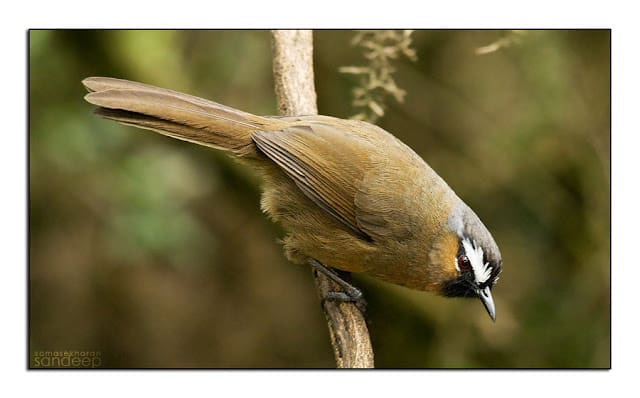While walking in the Nilgiris, listen closely for the guffaw of the Nilgiri Laughingthrush. And treasure it, for you’ll hear it nowhere else on earth
When I had first laid my hands on a Sony prosumer camera I found I could photograph birds within reach, and the target of one of my first attempts was a Nilgiri Laughingthrush, otherwise called the Rufous-breasted Laughingthrush or the Black-chinned Laughingthrush (Trochalopteron cachinnans). I first saw the bird on a trip with my parents to Doddabetta, a peak near Ooty. Kannada for ‘the large hill’, Doddabetta is the second highest peak in south India and the highest point in the Nilgiris.
As we walked about like regular tourists, bracing against the strong chill wind, I saw a unique bird — with bushy white eyebrows and captivating, red eyes — hop about on the macadam not far from the tourists. Incredibly, it didn’t seem perturbed by the crowd – something you can observe only in Doddabetta.
Later, I learned that the bird’s range is limited to the Western Ghats, and it is considered endangered due to the loss of its habitat.
Since then I have observed the Nilgiri Laughingthrush several times. Often, in the shola forests, they are seen hopping about the underbrush, quite indiscernible given their rufous brown plumage. An easier way to ascertain their presence is to listen for the call – it sounds like raucous laughter (the bird also has several variations and other calls).
While the birds’ numbers are dwindling due to the loss of habitat, the Doddabetta population is doing quite well, as I could tell when I visited Ooty last week. Though I saw the birds in a couple of other spots , they were nowhere as trusting as this population, and would scamper for cover the moment one cover was blown…
Here in Doddabetta they were all around, pecking at organic waste from teashops and peanuts left behind by tourists and, on one occasion, raiding a garbage bin about 2 metres in front of me. I counted at least 10 individuals in the two hours I spent there.
Disputable though it might be, human activity has helped a bird population to thrive.
Text and photos: Sandeep Somasekharan
Read all Encounter posts
Sandeep Somasekharan (or Sandy as friends call him) took his headlong plunge into photography with a three-megapixel Nikon point-and-shoot he purchased in 2003. The avid reader and an occasional scribbler started enjoying travel and nature more as he spent more time photographing. Meeting Beej in 2008 helped him channel his creative energies in the form of essays and nature photographs that he started publishing on the Green Ogre. Sandy loves to photograph birds and landscapes, and considers photography and writing as his meditation.
He is an engineer by education, IT professional by vocation, and a hopeless dreamer since creation.
-
Sandeep Somasekharan (or Sandy as friends call him) took his headlong plunge into photography with a three-megapixel Nikon point-and-shoot he purchased in 2003. The avid reader and an occasional scribbler started enjoying travel and nature more as he spent more time photographing. Meeting Beej in 2008 helped him channel his creative energies in the form of essays and nature photographs that he started publishing on the Green Ogre. Sandy loves to photograph birds and landscapes, and considers photography and writing as his meditation.
He is an engineer by education, IT professional by vocation, and a hopeless dreamer since creation.
View all posts





One thought on “Heard the laugh track of the Nilgiris?”